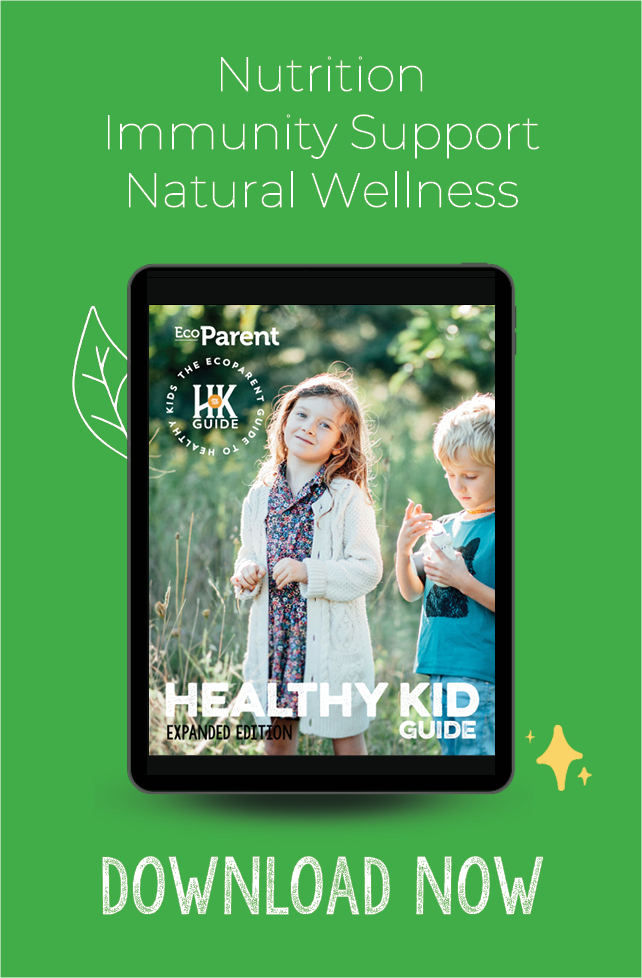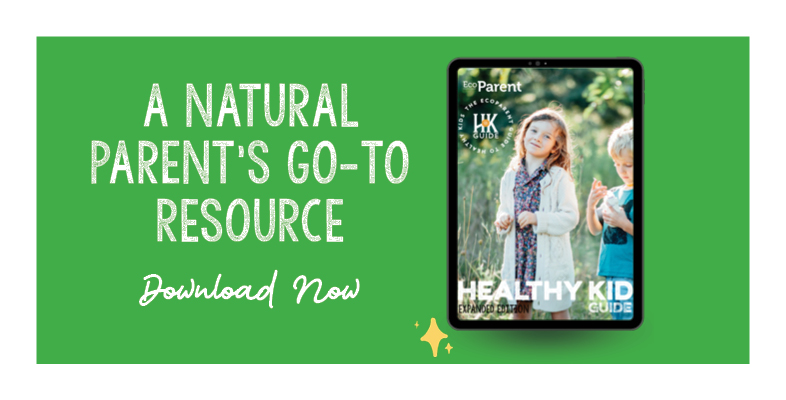The Truth About Plastic, Recyling, and the Environment
© Deposit Photos / KateNovikova
Have you ever wondered what happens to all those plastic containers and bottles once they’re picked up on garbage day? Do they really get recycled into other useful things, or do they just get shipped off to become someone else’s problem? Are all plastics created equally? And what about that number on the bottom of the container, the one neatly placed within a little triangle of arrows—what the heck does that mean?
As more and more of us opt out of plastic in favour of more sustainable options like stainless and glass—both out of a desire to shrink our carbon footprint and to protect our health—we have begun to question not only plastic’s impact on our world, but how the plastic that’s already in production will be recycled.
How plastics enter the environment
Plastics are organic polymers, long chains of repeating subunits—like a train made up of identical cars—that come in hundreds of different types, depending on the subunit (or monomer) and chemicals used. Manufacturers add things like colourants, fragrances, UV stabilizers, plasticizers, softeners, hardeners, flame retardants, and biocides to the monomer subunits to make the plastic more appealing, suit the application, last longer, and resist degradation. Often these additives are far more toxic than the base plastic itself.
Most of the plastic products we use (even single-use disposables) will survive long after we do, and as they break up into smaller pieces, they pose a greater threat to our environment and to human health. While recycling is very often possible, the actual recyclability rate of plastic is very low. Even those items that are highly recyclable must meet a series of specific requirements to be eligible for recycling: they must be very clean or uncontaminated, placed diligently into recycling bins, and be properly processed by the municipality. On top of that, there must be a market for the processed product (which, in fact, there often isn’t).

Microplastics and the food chain
Depending on the type or condition, plastic can linger in the environment for up to 1,000 years. While there are a handful of organisms that can “eat” very specific plastics, it happens at a very slow rate. In general, plastics don’t break down in the conventional sense, but break up into smaller and smaller pieces. Ultraviolet radiation from the sun and physical forces like wind, tidal action, or crushing forces like treading on or being pushed around in a landfill by a tractor weaken and break up the plastic over time, making the pieces smaller and smaller until they become too tiny to be seen. When these particles are reduced to a length of five millimetres or less, scientists call them microplastics.
The concern about microplastics is that they’re finding their way into our food. We hear about whales, turtles, and sea birds washing up on shores all over the world with their stomachs full of plastic bags and other large items, but what we hear less about is that the same thing is happening much lower on the food chain. Microscopic organisms called zooplankton mistake tiny microplastics for their food, phytoplankton. They are then eaten by shrimp and other creatures who ingest the microplastic-stuffed zooplankton, along with the microplastics that they are drawn to themselves. The shrimp are then eaten by small fish who have now taken in microplastics that they mistake for food and the microplastics that the shrimp have ingested and the microplastics that the zooplankton ingested. And so it goes up the food chain until we end up with seafood “à la plastique” on our plate! It’s not just an ocean problem: microplastics have been found in honey, bottled water, sea salt, beer, and even rain! And the smaller the pieces of plastic, the harder they are to collect and remove from the natural environment. Though microscopic, out of sight does not—and should not—mean out of mind.
To top it off, plastic is chemically reactive and can attract other chemicals and toxins—like PCBs and pesticides—which hitchhike along for the ride and introduce other toxic compounds into the food chain. None of this means that we should never eat again or run for cover whenever it rains for fear of being turned into a puddle of ooze, but it does mean that we shouldn’t take plastic—or its impact on the environment and human health—for granted.
Bioplastics alone are not a solution
Bioplastics are plastics that are either partially or completely comprised of plant-based matter, typically starch (with cornstarch being most common in North America), but also cellulose or vegetable oil. Heck, there’s a company in Mexico that’s making bioplastic using discarded avocado pits! Bioplastics have been marketed as being very eco-friendly because they’re biodegradable. After all, they’re made from plants, and plants are compostable, so therefore the bioplastic must be compostable, right?
Unfortunately, it’s a bit more complicated than this. In order to have a product be considered bioplastic, it must contain a minimum of 20 percent plant-based matter. This means that as much as 80 percent then can be conventional petroleum-based plastic. Further, just like with the extra chemical additives included in conventional plastics to help them last longer, look more appealing, and be easier to form, bioplastics suffer the same fate. When manufacturing with a natural product that is, at its very core, biodegradable, more chemical additives are needed to slow the breaking down process. You can bet that those chemical additives (like biocides to kill mold, fungi, and bacteria) are anything but natural and non-toxic. Doesn’t really live up to the “eco-friendly” promise on the packaging, does it?
Almost all bioplastics on the market are a mix of conventional plastic and plant-based matter (most commonly 70 percent plastic and 30 percent plant starch), and it is this mixture of plastic with an otherwise biodegradable and compostable material that presents the biggest problem at the end of the product’s life. Something that is 100 percent plastic is fully recyclable, and something that’s 100 percent natural and plant-based is fully compostable, but once you mix materials that are plastic and plant-based, you get an entirely different animal. The plant-based portion of the bioplastic that’s mixed in is actually contaminating the purity of the plastic, rendering the product non-recyclable. Likewise, the plastic portion is not compostable, rendering the product unacceptable to almost every composting facility.

Bioplastics and Composting
Bioplastics can biodegrade if they meet very stringent industrial conditions—hence the certification standard that’s often referenced on bioplastic product labeling—which you most definitely won’t be able to achieve in your typical backyard compost bin. These industrial conditions have specific levels of heat, moisture, and aeration that must be met (e.g. 12 weeks with temperatures constantly above 50°C at high humidity). A key criterion for a plastic to be considered compostable according to international standards is that 60 percent of the resin must biodegrade within 180 days. That means that even after half a year of composting under strict conditions such as those described, there could remain just under half (40 percent) of the original bioplastic and it will still be considered as meeting the industry standard of “compostable”, which isn’t exactly what we imagine when we envision a biodegradable product, is it?
The reality is that most bioplastic products available on the market are destined for the landfill at the end of their life cycle, which isn’t the green, compostable dream it’s touted to be. This makes it tough for many households and service providers to justify the higher cost of bioplastics over alternatives. Further, there is also concern that the crops used should be set aside to feed people and animals, not make products, and that the social and environmental ramifications of using commonly genetically modified foods may outweigh the benefits. Nonetheless, do they still have a place in manufacturing? Since at least some of the material used to make them (what the industry calls the “feedstock”) is bio-based, it is still a potential environmental win on some level. The more plant-based bioplastics on the market, the less petroleum is needed for producing conventional plastics.
Reduce, reuse, recycle – in that order
Most of us are familiar with the 3 Rs (reduce, reuse, recycle), but did you know that they’re organized in order of priority? The greatest environmental benefits come from simply reducing the number of things we buy and use, thereby reducing the energy, water, and resources involved with their life cycle. Reusing things is also beneficial to the planet, as it keeps us from buying more of what we may already have.
Recycling is less clear in its benefits. On the surface, recycling looks good for the planet, keeping materials out of the landfill by using them to make new products. But recycling also gives us a false sense of environmental self-satisfaction with all those job-well-done feelings that come with putting stuff in our recycling bin. Instead, we should feel good when there’s no waste to put in it at all!
Contrary to what many believe, most recyclable plastic products either don’t enter the recycling stream or aren’t easily recycled for many reasons: the local municipality may not offer this service, recycling isn’t a convenient option if there are no receptacles nearby, the user isn’t motivated to recycle the product, or the user isn’t sure about whether the product is recyclable (or where to put it if it is). The sad reality is that North America recycles less than 10 percent of its plastics.
Even if an item is recyclable and reaches the sorting facility, there has to be someone willing to purchase the plastics your municipality has collected. If not, they will just sit there or be sent to landfill to clear storage space for a recyclable material that is easier to sell (like aluminum). On top of that, once a buyer is found, the plastic must be largely free of contamination like food, dirt, or other materials that aren’t the same kind of plastic. The more food left on a plastic container, the less likely it is to meet the purity requirements for recycling. Peanut butter or yogurt left at the bottom of a jar, curdled milk in a plastic jug, newspaper used to pick up a spill, food stains on a cardboard pizza box, or cramming plastic bags into an empty tin can render a material unrecyclable. Contamination can ruin it for the whole lot, often causing a 1000-pound bale to be sent to landfill instead of being recycled.
15 ways to recycle better
What can you do to decrease your dependence on recycling? A lot! Making a few simple changes to your daily routine and arming yourself with a little knowledge can garner big results for both the health of your family and the planet.
Follow the 3 Rs …in order! Before you buy something ask yourself if you really need it. It can be easy to confuse needs with wants, so here’s a quick tip: if it’s on sale but you wouldn’t buy it at full price, skip it. By reducing what you buy or reusing what you already have, you’ll save time, money, and reduce your environmental footprint!
BYO. Virtually eliminate the need for plastic packaging by shopping at a bulk store and bringing your own containers. If you can’t get a much-used item in bulk, buy it in a large, family, or economy size, which typically means less packaging than their convenience-sized counterparts. Build a BYO kit with cutlery, straw, containers for leftovers, refillable water bottle, cloth napkins, and cloth bags. Keep one in your car and one at the front door so you’ll always be prepared wherever you go!
Reuse, reuse, reuse. I’ll say it again: reuse. Wherever possible, choose reusable over disposable, especially as products that are reusable are typically made of more durable materials that are usually less chemically reactive, thus safer for your family. A caveat to reusing is with single use plastics like those found in microwavable food trays and disposable plastic water bottles, which may leach toxins in your food or drink. Even if unopened, don’t leave water bottles in a hot place (like inside your car on a summer day): that plastic-y taste means you’re drinking…well…plastic.
Go au naturel. Synthetic fibres like nylon, polyester, spandex, and acrylic are being recycled more, but their recycling rates are still very low. While opting for natural fibres in the first place is better, don’t toss synthetic clothing you already own! Since synthetics shed the most during the first few washes, love the ones you’ve already got until they’re at the end of their life. You can also reduce the rate of microplastic shedding by washing your synthetics in a delicates bag in cold water with liquid detergent on the gentle cycle. A front load washer is best, and investing in a microplastics-catching device with a high capture rate is beneficial as well.
Avoid the hot mess. Plastics (and all the additives in them) leach out at higher rates when they’re heated or in contact with acidic (think tomatoes or citrus) or oily foods and drinks. A perfect storm would be microwaving your leftover pasta sauce in a plastic container.
Banish black plastic whenever possible. Many municipalities don’t recycle black plastic items as it doesn’t reflect light, making it impossible for the optical sorting equipment at recycling facilities to distinguish it from the black conveyor belt. Further, because it can’t be effectively sorted, it runs the risk of contaminating whatever other material remains on the belt during the sorting process (typically glass), and jeopardizing the recyclability of the other items. White or clear plastic is the most desirable for recyclers because they can be used to make any other colour, while black plastic can only be used to make black plastic.
Clean up your recycling game. Wash all containers before putting them into the recycling bin. If plastic bags are collectible where you live, stuff all your unwanted plastic bags into a single bag and tie a knot at the end of it to keep all the bags inside from coming out (and getting caught in the sorting equipment).
Take out the trash. Potato chip or snack bags make perfectly good garbage bags and bin liners. If you live in a city that separates wet (organic/food) waste from dry (recyclable and other), your recycle and garbage bins will rarely get icky, which means you might be able to skip lining those bins in plastic altogether (if your municipality allows it!).
Garbage in, garbage out. Find out exactly what items are recyclable in your municipality—many municipalities provide handy charts you can post on your fridge for quick reference. It sounds counterintuitive, but if in doubt, err on the side of caution and put it in the garbage. Too often we contaminate the recyclable plastics by also including non-recyclable plastics in the recycling bin (referred to as “aspirational recycling”). This can push the contamination rate too high, causing it all be sent to the landfill. In this case, your intuition may not steer you right—what goes where might be surprising (e.g. soiled cardboard pizza boxes are often organics/compost waste, and bioplastic/compostable plastic items are almost always garbage).
Take a pass on PVCs. If you have to use plastic, avoid polystyrene and PVC as much as possible, in particular for anything that comes in contact with food or drinks. Instead opt for polyethylene and polypropylene, especially for food containers.
No nukes! Avoid microwaving food in plastic, including plastic cling wrap, sandwich or plastic bags, and old, scratched, or cracked plastic containers. Most takeout food containers are not microwave safe either. Keep in mind: “microwave safe” only means that the container won’t warp/deform/melt in the microwave and is not a statement about food safety.
Embrace the “RE”s. First, reduce. Then repair, refurbish, and repurpose what you own before sending it off to the trash.
Avoid imitations. Despite the pro-environmental marketing, oxo-degradable plastics aren’t the same as biodegradable. Rather, they are just traditional fossil fuel-based plastics that have been mixed with an additive that causes the plastic to break down more quickly into microplastics. Not great.
Arrange for pick-up. It’s a great way to get outside, help clean your neighbourhood, see first-hand how much plastic waste is out there, and it’s a great lesson to teach the kids! A shoreline cleanup is best of all, because it helps catch plastics before they enter the waterways. Once in the water, plastic more readily enters our food chain, sheds microplastics, and is much harder to collect than on land.
Up your game. If you really want to challenge yourself, try to go plastic-free for thirty days. You may be surprised at the results! (Want to see how we did it? Check out ahimsaeco.com/how-we-went-plastic-free/)
In this day and age—and especially as a busy parent—you can never escape all plastic, but hopefully this will help you make informed decisions about how you can reduce your plastic use, recycle responsibly, and better protect the health of your family.









